Samsung has unveiled the world’s thinnest LPDDR5X DRAM chips for smartphones, tablets, and other mobile devices. The chip is just 0.65mm thin.
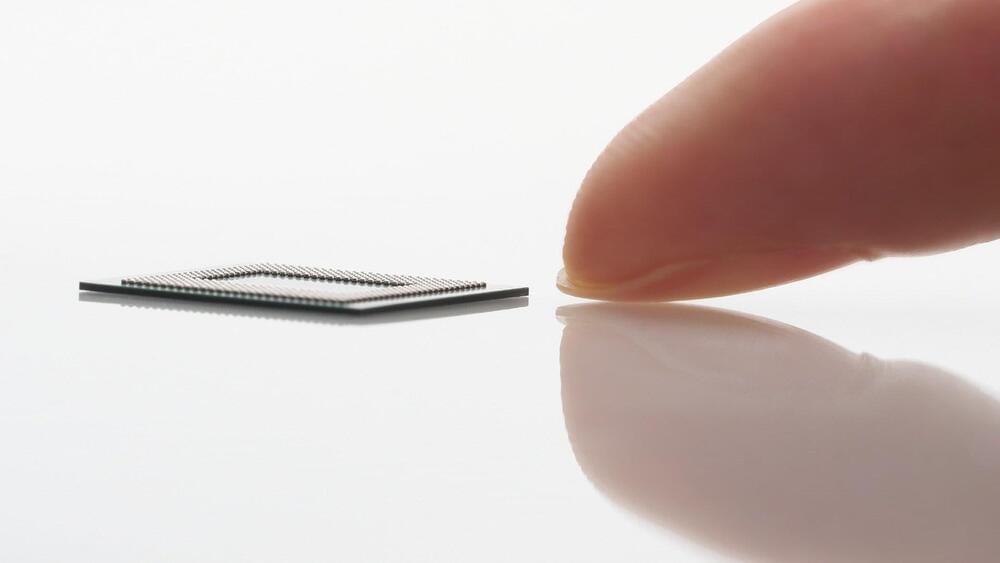


Passwords, Touch ID, and Face ID could all be a thing of the past, as Apple is working on a future where unlocking your devices is as easy as just holding a future iPhone or letting your Apple Watch sense your unique heart rhythm.
Everyone’s heart has a unique rhythm, which the Apple Watch monitors through the ECG app. In a recently granted patent, Apple describes a technique for identifying users based on their unique cardiovascular measurements.
With this technology, you can unlock all your devices if you keep wearing your Apple Watch. Verifying your heart patterns instead of a password or a fingerprint scan increases security and speeds up your identification.

Topological insulators, capable of transmitting electricity without loss, may function in fractional dimensions such as 1.58. This breakthrough, combined with room-temperature operability, paves the way for advancements in quantum computing and energy efficiency through fractal structures.
What if we could find a way to make electric currents flow, without energy loss? A promising approach for this involves using materials known as topological insulators. They are known to exist in one (wire), two (sheet) and three (cube) dimensions; all with different possible applications in electronic devices. Theoretical physicists at Utrecht University, together with experimentalists at Shanghai Jiao Tong University, have discovered that topological insulators may also exist at 1.58 dimensions, and that these could be used for energy-efficient information processing. Their study was published recently in Nature Physics.
Classical bits, the units of computer operation, are based on electric currents: electrons running means 1, no electrons running means 0. With a combination of 0s and 1s, one can build all the devices that you use in your daily life, from cellphones to computers. However, while running, these electrons meet defects and impurities in the material, and lose energy. This is what happens when your device gets warm: the energy is converted into heat, and so your battery is drained faster.
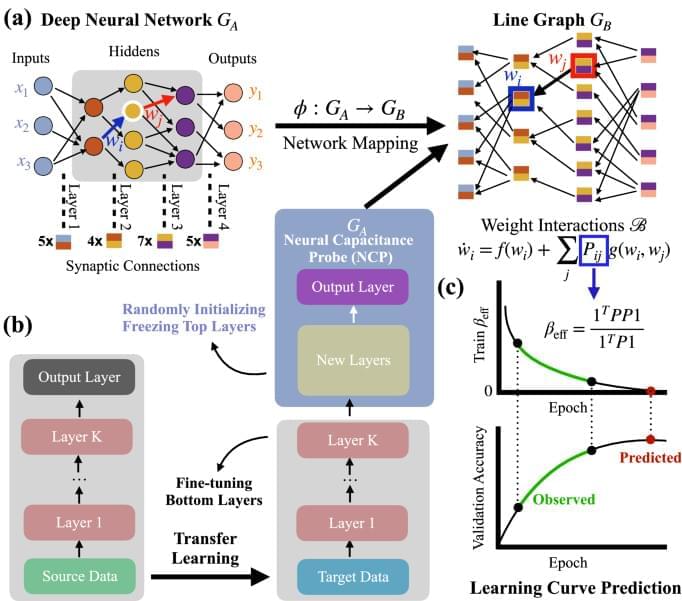
Machine learning influences numerous aspects of modern society, empowers new technologies, from Alphago to ChatGPT, and increasingly materializes in consumer products such as smartphones and self-driving cars. Despite the vital role and broad applications of artificial neural networks, we lack systematic approaches, such as network science, to understand their underlying mechanism. The difficulty is rooted in many possible model configurations, each with different hyper-parameters and weighted architectures determined by noisy data. We bridge the gap by developing a mathematical framework that maps the neural network’s performance to the network characters of the line graph governed by the edge dynamics of stochastic gradient descent differential equations. This framework enables us to derive a neural capacitance metric to universally capture a model’s generalization capability on a downstream task and predict model performance using only early training results. The numerical results on 17 pre-trained ImageNet models across five benchmark datasets and one NAS benchmark indicate that our neural capacitance metric is a powerful indicator for model selection based only on early training results and is more efficient than state-of-the-art methods.

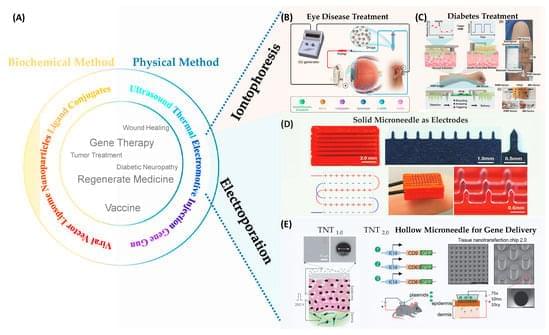
Nanotransfection is very useful and could be used as a way to heal oneself on a smartphone in one touch with cell reprogramming and much more like gene transfer.
Tissue nanotransfection (TNT), a cutting-edge technique of in vivo gene therapy, has gained substantial attention in various applications ranging from in vivo tissue reprogramming in regenerative medicine, and wound healing to cancer treatment. This technique harnesses the advancements in the semiconductor processes, facilitating the integration of conventional transdermal gene delivery methods—nanoelectroporation and microneedle technologies. TNT silicon chips have demonstrated considerable promise in reprogramming fibroblast cells of skin in vivo into vascular or neural cells in preclinical studies to assist in the recovery of injured limbs and damaged brain tissue. More recently, the application of TNT chips has been extended to the area of exosomes, which are vital for intracellular communication to track their functionality during the wound healing process.

A 64-year-old named Mark has spent the last year learning how to control devices like his laptop and phone using a brain implant. And thanks to OpenAI, it’s gotten a whole lot easier to do.
The neurotech startup Synchron said Thursday it’s using OpenAI’s latest artificial intelligence models to build a new generative chat feature for patients with its brain-computer interface, or BCI.
A BCI system decodes brain signals and translates them into commands for external technologies. Synchron’s model is designed to help people with paralysis communicate and maintain some independence by controlling smartphones, computers and other devices with their thoughts.
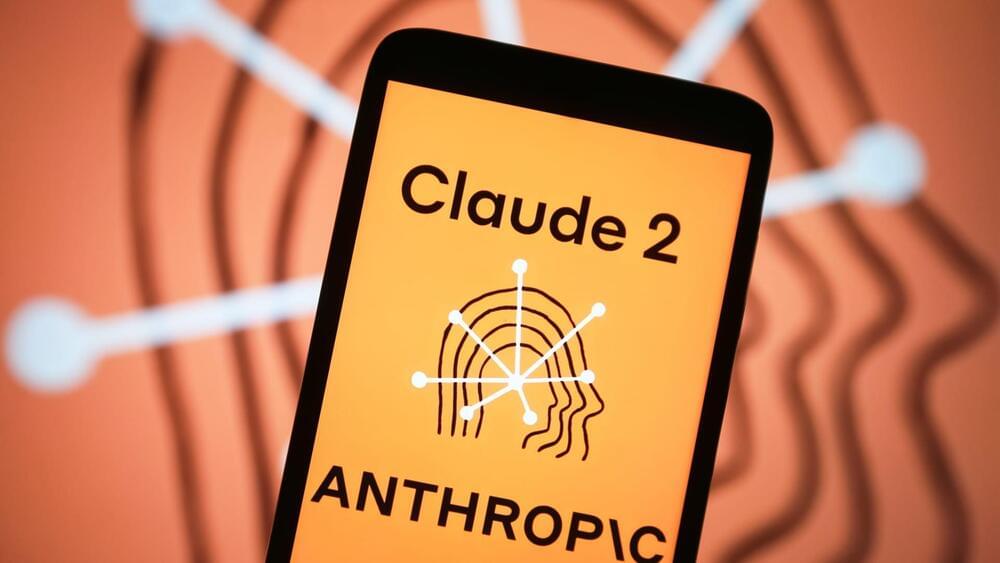
The artificial intelligence startup and Menlo Ventures are launching a $100 million fund on Wednesday to back early-stage startups, and get them using the AI company’s technology. Menlo will put up the cash to invest in the startups, while Anthropic will give founders $25,000 in credits that go toward using its large language models.
The launch of the Anthology Fund mirrors a partnership between Apple and venture firm Kleiner Perkins. The joint venture, called the iFund, was introduced in 2008, a year after the iPhone hit the market, to support developers on Apple’s mobile platforms. It initially started with $100 million in 2008, and doubled to $200 million two years later.
Matt Murphy, a partner at Menlo Ventures and a former partner at Kleiner Perkins, said the iFund was the inspiration for this launch.

HarmonyOS Next, on the other hand, is an Android-free variant of HarmonyOS. The new operating system doesn’t use AOSP libraries, can’t run.apk files, and is a significant step towards complete independence from US-based software for the vendor. HarmonyOS Next is not currently shipping with Huawei products but is available as a developer sandbox to develop and test apps for native HarmonyOS use. HarmonyOS Next hasn’t yet arrived on PC, but recent leaks suggest it soon will, paving the way for a new Chinese homegrown desktop OS.
Images of HarmonyOS Next for PC suggest an operating system taking design cues from MacOS. The system has a familiar status bar and dock bar combo on the top and bottom. The fullscreen/minimize/close buttons live on the right-hand side of programs, mirroring MacOS’s traffic light system.
Huawei’s recent strategy for HarmonyOS has publicly been phones-first. With HarmonyOS being open-source, much like Android, widespread adoption across the Chinese market and beyond outside of Huawei phones is possible and a big goal for Huawei. HarmonyOS already makes up 16% of the Chinese phone market, which is expected to grow in the coming years.
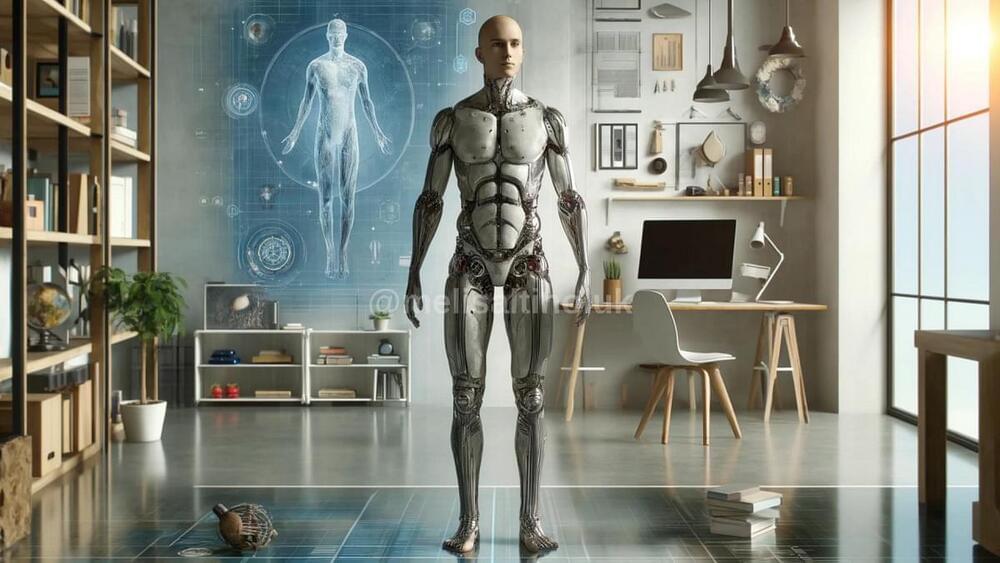
I have recently read the report from Sharad Agarwal, and here are my outcomes by adding some examples:
Transhumanism is the concept of transcending humanity’s fundamental limitations through advances in science and technology. This intellectual movement advocates for enhancing human physical, cognitive, and ethical capabilities, foreseeing a future where technological advancements will profoundly modify and improve human biology.
Consider transhumanism to be a kind of upgrade to your smartphone. Transhumanism, like updating our phones with the latest software to improve their capabilities and fix problems, seeks to use technological breakthroughs to increase human capacities. This could include strengthening our physical capacities to make us stronger or more resilient, improving our cognitive capabilities to improve memory or intelligence, or even fine-tuning moral judgments. Transhumanism, like phone upgrades, aspires to maximize efficiency and effectiveness by elevating the human condition beyond its inherent bounds.